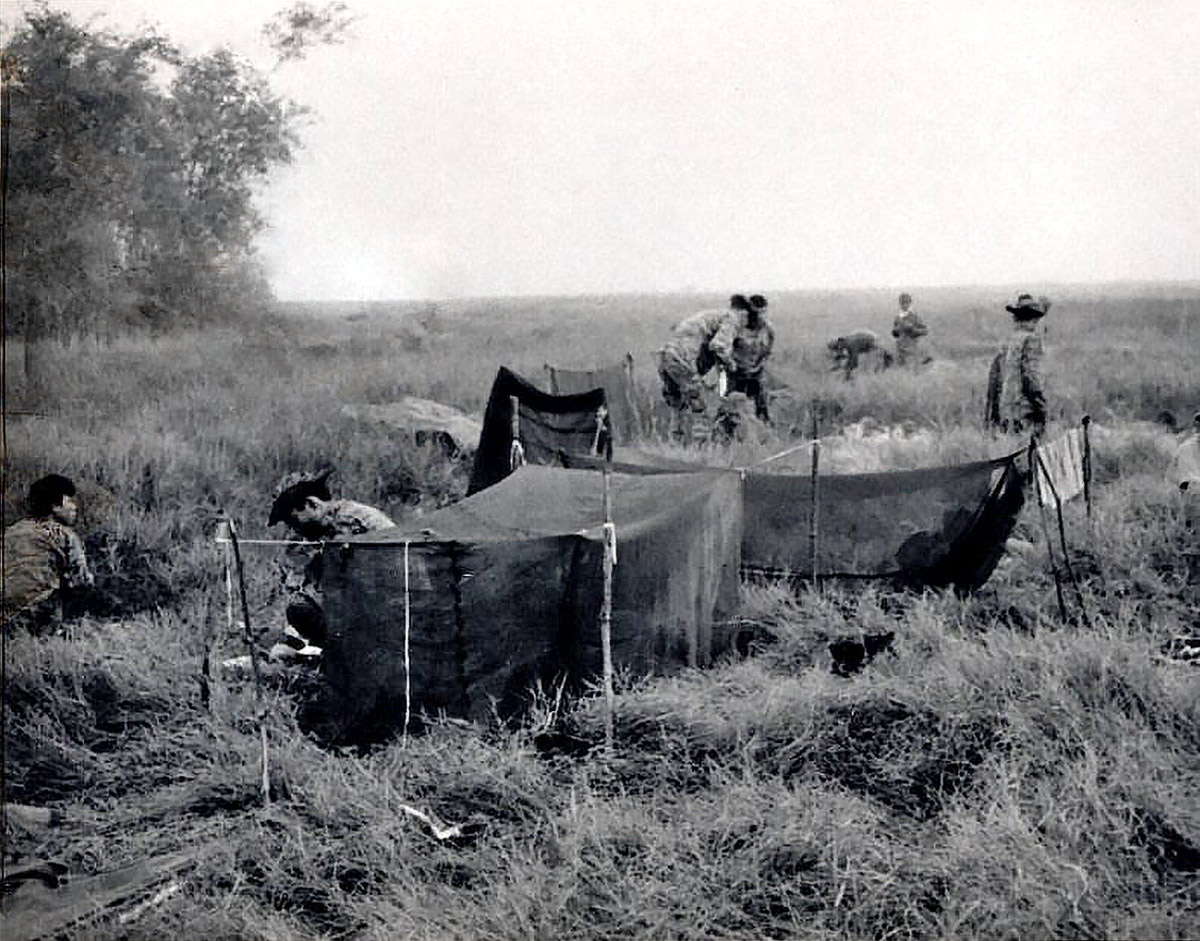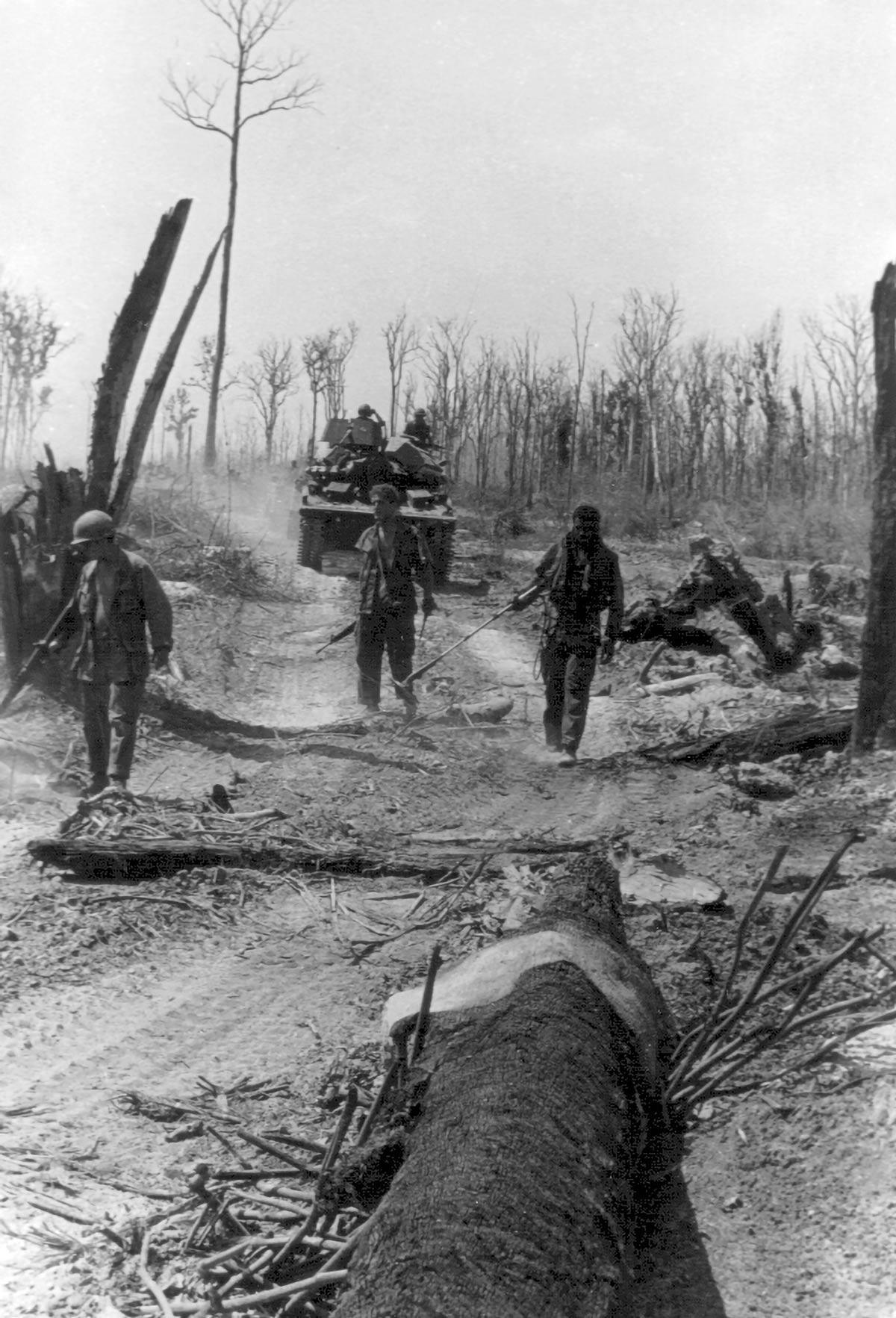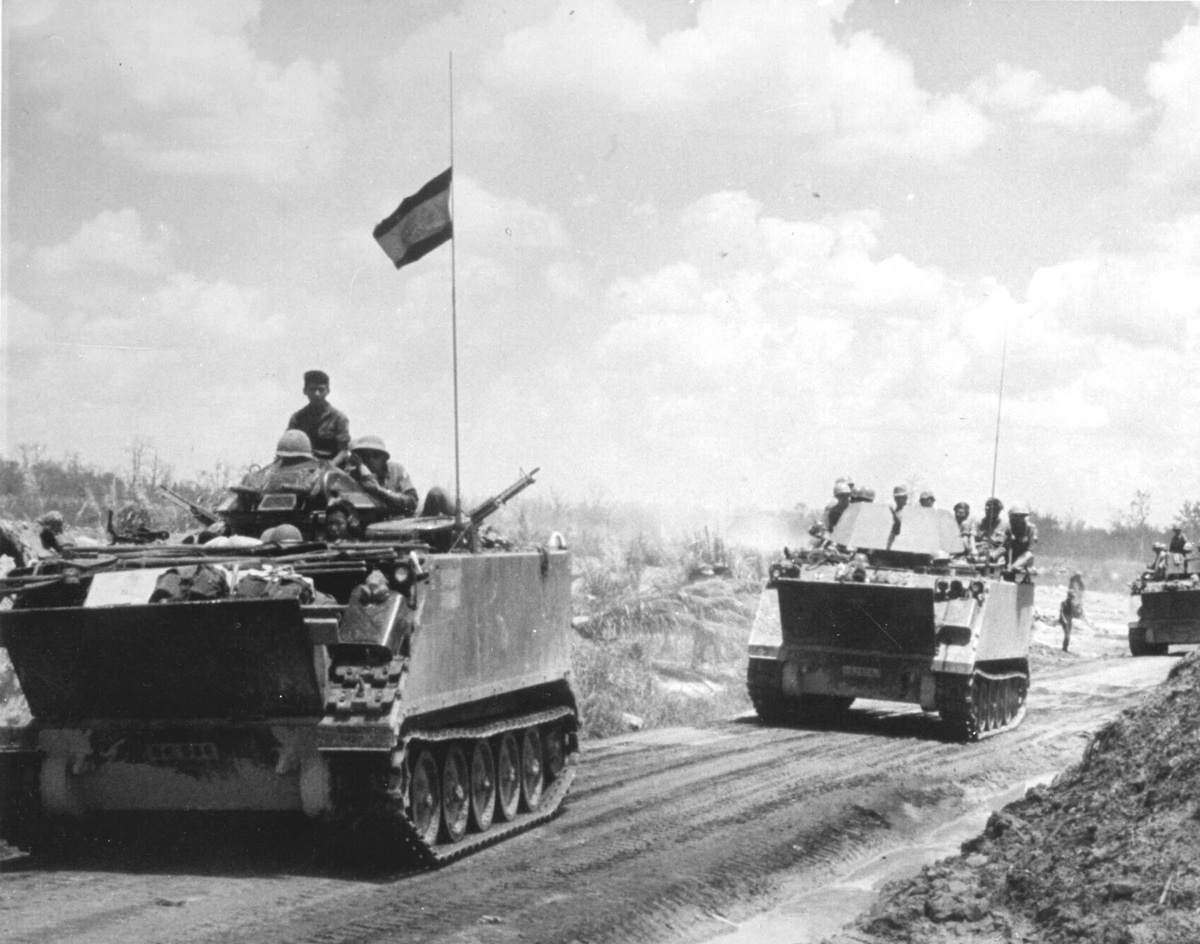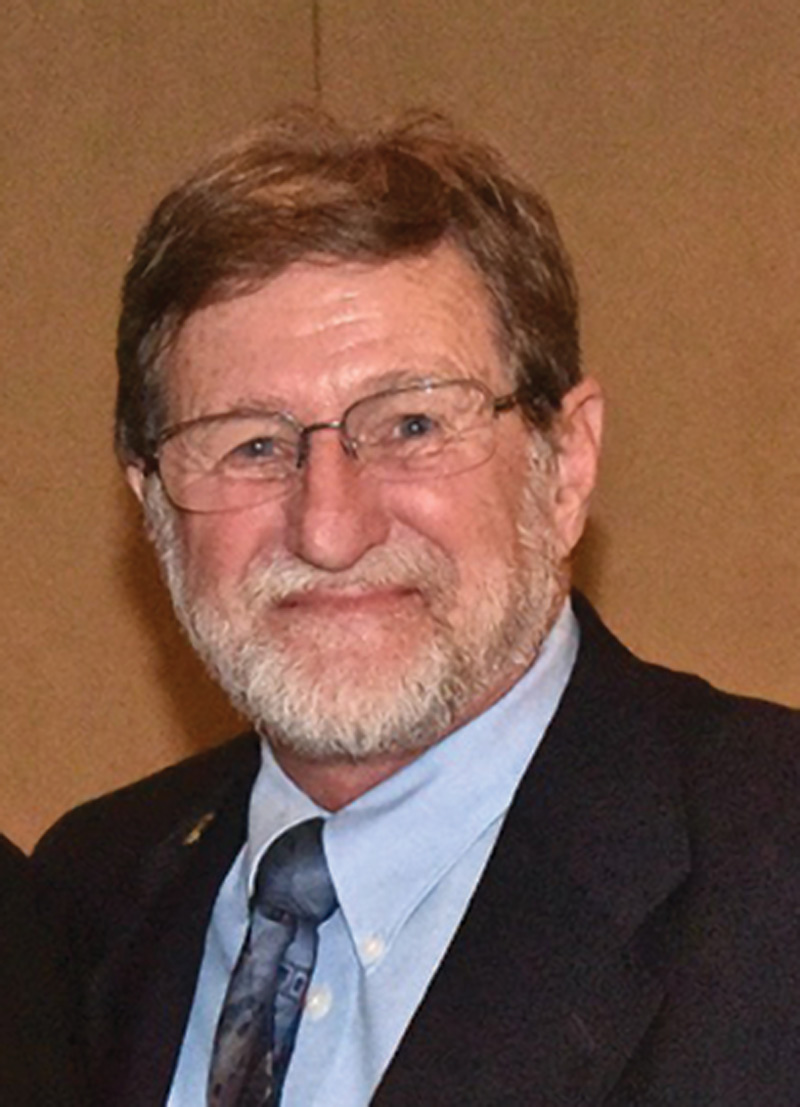Cambodian Incursion, 1970 — Part Two
By How Miller
SGT, SF Medic at A325 Duc Hue
Originally published in the June 2021 Sentinel
In last month’s issue of the Sentinel, we described how, in the spring of 1970, President Nixon saw an opportunity to help save the newly friendly Cambodian government, while giving a hopefully crippling blow to the North Vietnamese. He was also trying to turn the war over to the South Vietnamese, and saw this as an opportunity for the ARVN (Army of the Republic of Vietnam) to accomplish missions on their own and boost their confidence.
Things happened in rapid succession once the Cambodian government lost patience with their constitutional monarch, Prince Sihanouk. On March 12, while the Prince was abroad for medical treatment, the Prime Minister, Lon Nol, gave the North Vietnamese an ultimatum to leave supposedly neutral Cambodia in 72 hours, and he also shut down their access to the heavily used port of Sihanoukville, cutting off a major communist supply route to South Vietnam.
The north was not going to give up the robust infrastructure they had spent years building up along the eastern parts of Cambodia, and felt that the ineffective Cambodian Army (FANK) were not capable of making them leave. So the North Vietnamese Army (NVA we called them), attacked and took over several provinces and armed, trained, and encouraged the communist insurgents, the Khmer Rouge. Meanwhile, on March 18, Lon Nol’s government deposed Prince Sihanouk and gradually asked us for help.

Major Areas of Operation for the Combined Incursion (US Army)
The South Vietnamese helped him first. In March the ARVN made forays across the border into the southern regions and found caches of arms, which they destroyed. More and bolder ARVN operations led to joint missions with the Cambodian Army (FANK) to defend the capitol Phnom Penh from the NVA. There was also a cooperative effort to evacuate 35,000 ethnic Vietnamese to South Vietnam, spearheaded by Cambodian, U.S., and South Vietnamese navies, after a large number of civilians had been murdered.
In a televised address on 30 April (U.S. time), Nixon announced the U.S. and the South Vietnamese would clear out the NVA sanctuaries along the border. On May 6, two days after four students died in the Kent State University protests, Nixon limited the U.S. troops to an incursion depth of 30 Km and a June 30 deadline to leave. The South Vietnamese were not constrained by those restrictions. Things heated up rapidly with 30, 000 American troops and 50, 000 South Vietnamese (ARVN, RF/PF’s, CIDG, etc.) becoming involved, along with almost 10,000 air sorties being flown, and the U.S. and RVN Navies contributing significantly.
Records of U.S. Special Forces involvement are not easy to find. But with the help of our unofficial SF historian, Steve Sherman, I found that there were numerous A-camps involved besides Duc Hue and Tra Cu, along with a surprising contribution from SOG’s CCS. The CIDG were Special Forces trained, and advised, irregular troops.

CIDG were trained as light infantry. This is a typical rest overnight setup, plus security, not shown. (photo courtesy How Miller)
II Corps —
Operation Binh Tay [Tame the West]
In the northern areas, west of Pleiku, two brigades of the U.S. 4th Infantry Division, including a unit borrowed from the 101st Airborne Division, deployed from Pleiku by trucks to just outside the Special Forces A-camp referred to as New Plei Djereng.
The SF Medic there, Rich Pellerin, recounted to me that a couple of very long convoys arrived, and it took more than a day to deploy them all by helicopter to ”Base Area 702” to the west across the border. The terrain in that area was part of the mountainous Central Highlands, so a land assault did not make sense. As it turns out, the reason it took so long was the LZ’s were so hot they were only able to “successfully” insert about 50 men the first day. Action was intense with several friendly losses, including both men and aircraft. The next morning the rest of them began inserting smoothly as the enemy had left during the night, according to Doug Milliken of the 4th ID. He wrote an interesting book Testimony of the Protected, partially about his recollections of that twelve day operation.
The ARVN 22nd Division was on the left flank of that operation from 5 to 25 May. As that operation was extended, a company of CIDG joined the ARVN. In that second stage the SF A-camp Duc Co was the base of operations. By the time June 30th rolled around, all of B23’s A-camps had participated in the effort under the control of either the 22nd or 23rd ARVN Divisions. They found large amounts of weapons, ammo, and rice, a good portion of which they destroyed in place. There are indications that this started so late because it was added at the last minute, due to the reassuring successes, especially from III Corps.

11th ACR Engineers clear trail of mines in Cambodia.(DoD)
III Corps —
Operation Thoan Tang [Total Victory]
Further south, in III corps, as one got nearer to Saigon, the number and size of the NVA “Base Camps” got bigger and more numerous. The Fishhook and the Angels Wing/Parrots Beak standout due to how close they were from the southern capital, Saigon — 50 and 40 miles respectively.
Near the Fishhook was also the suspected location of COSVN, the supposed southern military and political command center for all NVA and VC activity. When Nixon declared in his “Incursion” announcement that COSVN would be found and destroyed, it was a poorly chosen objective. Besides there being no huge concentrated infrastructure associated with it, the personnel had left shortly after Sihanouk was deposed, several weeks earlier. In fact an earlier ARVN operation, in April, had surrounded the Provisional Revolutionary Government of South Vietnam, but with the aid of the NVA they were able to escape that night and make their way northwest, deeper into Cambodia and back under the protection of the north.
What was found, as predicted, was a prodigious amount of weapons and supplies. The enemy put up fierce resistance at first. That was because the overall strategy of the north was to delay as much as possible and avoid large unit confrontations, which they were likely to lose, due to the overwhelming air power we had.
The incursion in this area was heavier and started earlier. On 1 May the U.S. 1st Cavalry Division and 11th Armored Cavalry Regiment were joined by the ARVN 1st Armored Cavalry Regiment and 3rd Airborne Brigade in attacking north, into the Fishhook and the area around Snoul, Cambodia. Though the NVA had begun moving two days prior, resistance was heavy at first near Snoul. In fact it was the heaviest of their whole campaign. When the enemy finally disengaged, the “Cav” found a two square mile complex southwest of Snoul that was so big they called it “the City”. It was one of the two biggest base areas discovered, with a hospital, truck repair yard and a huge amount of weapons, ammo, and food. Though the NVA may have taken the best weapons, they clearly left the bulk of their supply. There was so much that large quantities had to be destroyed in place.
A little to the west, on May 6, the 1st and 2nd brigades of the U.S. 25th Infantry Division struck north to Memet. The 2nd Brigade was joined by a CIDG contingent from Thien Ngon A323. The CIDG returned to camp by May 27 due to what was felt to be a lack of support from the 25th ID, though they were given responsibility for a firebase on June 8. Thien Ngon and Katum camps became bases of operation for an ARVN Airborne Brigade and all friendly units in Cambodia.

ARVN on m113s in Cambodia. (DoD)
On 7 May, two battalions of the 3rd brigade of the U.S. 9th Infantry Division attacked through the Dog’s Face, northwest of Tay Ninh, near Svay Rieng, while Bu Dop and Ton Le Chon A-camps received indirect fire and ground contact with up to company size forces. On 6 May, the 2nd brigade of the U.S. 1st Cavalry Division crossed northwest of Bu Dop. They were accompanied by CIDG from the Loc Ninh Special Forces A-Camp. Here they found the other big prize. They called it Rock Island East, for the famous armory west of Chicago. One of the most striking finds was 6.5 million rounds of antiaircraft ammunition, along with 500,000 rifle rounds and thousands of rockets. They found so many supplies that they constructed a pioneer road to transport most of it back across the border. On 9 May Loc Ninh A331 even discovered a cache in their own AO with 250 bikes, 3 AA guns, and 5 tons of rice.
As mentioned last month, my camp Duc Hue A325 and our sister camp just to our east Tra Cu A326 conducted a joint operation in the Angels Wing/Parrots Beak area called Ba Thu, south of what is now Chantrea. This was after the ARVN had swept through at the end of April with a pincer movement and continued west to help the Cambodian FANK. We had time, after our significant initial exchanges with the VC/NVA, to explore and discover many caches of weapons and ammo. We even had to blow up a lot of TNT and mines as there was no reasonable way of transporting them back across the border, even though we stayed until late June. Apparently all of Hau Nghia and Long An provinces were being supplied from there. Also, during May the turnovers of Song Be B34 and Duc Phong A343 to the Regional Forces (RF) were nevertheless completed, as planned. And on June 13, at Ben Soi around 0400 a platoon of sappers managed to enter, and did a lot of damage before being ousted from the camp. Four CIDG were KIA and many injured.
IV Corps —
Operation Cuu Long [Mekong]
On May 9 the ARVN 9th and 21st Infantry Divisions, along with the ARVN 4th Armored Brigade and their 1st Marine Brigade began assaulting up the north side of the Mekong River. They were aided by 100 South Vietnamese Navy and 30 U.S. Navy boats and went up the river to Pre Veng.
On May 16 the FANK and the ARVN retook Kampong Cham, northeast of Phnom Penh, helping considerably the defense of the capital, Phnom Penh.
There was different activity reported in IV Corps. The ARVN had apparently performed quite well under COL Tri in the Parrots Beak and the Angels Wing, sweeping through and continuing on towards Pnomh Penh to help the FANK, however, there was no collateral operation by any large American ground unit from IV Corps, just the continued vigorous activity by the Navy.
There was frequent and intense activity against SF A camps, and enemy resistance to operations. Though there were significant caches found, they were in smaller batches, and VC/NVA activity appears to have been significantly higher there in the Delta, according to the reports. In the other Corps areas enemy activities were curtailed inside Vietnam during the incursion, due to the NVA trying to subdue the FANK as well as save themselves.
Among the camps: A403, A413, A414, A415, A431, A432, A442, B41, B42 all were involved. For example: on May 1, A413 and 414 discovered a grenade manufacturing facility and destroyed it. On May 9, A432 initiated a heliborne assault against a known VC stronghold. The enemy withdrew after a 3-hour engagement.
On May 10, B41 Moc Hoa came under indirect fire, the results included 4 Green Berets wounded. On the same day a prisoner led A432 to 49 cached weapons.
Between 17 and 24 May, B42, A403, A432, A442, “149”, A415, A431 were all involved. On May 17 to 18 an A402 force was inserted and became surrounded. They were soon joined by elements from A431 and A432 and defeated the enemy. They subsequently found caches. Again on May 20, A402 and A403 were engaged by the enemy and ultimately found more cached materials.
There were numerous incidents similar to these right up through 23 June at Cai Cai. The last 2 USASF left Cambodia after an unsuccessful night ambush, and arrived at a firebase at 0945, June 30.
Our camp, Duc Hue was preparing the CIDG to become Vietnamese Rangers when I left. The camp was officially turned over in November. By 1 August I was on THE Freedom Bird, heading for civilian life. I was discharged from the army at Ft. Lewis, WA that same day.
A lot of this information became public knowledge fairly soon after it happened. Behind the scenes, however, MACV-SOG’s southern component, CCS, at that time had prime responsibility for recon and interdiction of the Ho Chi Minh trail in Cambodia, in the operational area then called Salem House, which continued unabated during this time. It turns out that besides their spectacular recon and interdiction successes, they took advantage of a different opportunity to help out the Cambodians. But…that’s another story. Next month we will hear more about that.
This 3-part article is not meant to be a historical treatise; it is just meant to convey the level of activity that Special Forces and the CIDG contributed to the Cambodian Incursion. A lot of this information, and more, can be found on Wikipedia, but was also derived from many other sources, including Steve Sherman’s CD rom.
RECOMMENDED READING
About Special Forces participation:
A Command History of Special Forces Participation in the CIDG Program (1961-1971) (CD ROM) from Steve Sherman:
https://www.specialforcesbooks.com/SFHistCD.htm
About ARVN and U.S. line unit participation:
A large pdf published by the U.S. Department of the Army, written by ARVN Brig. Gen. Tran Dinh Tho, who participated in and wrote in great detail about the various operations:
https://apps.dtic.mil/sti/pdfs/ADA324718.pdf
About the Author:
How Miller has served as the editor of Chapter 78’s Sentinel since January 2021. Read How’s Member Profile to learn more about him.

Leave A Comment